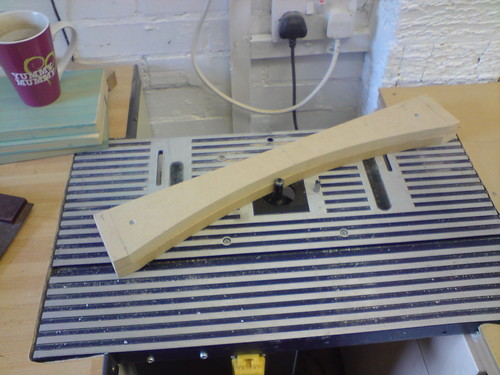DangerousDave
Established Member
Evening all, quick question; I'm using a template to cut shaped top rails for a face frame. I made the template by removing the bulk at the bandsaw and sanding to the line. I now want to use a bearing guided straight cutting bit in the router table (freehand with pin) to trim the piece to the template (after bandsawing the bulk). Question is, what do you use to stick the template to the piece? I'm loath to use brads. Is double sided sticky tape strong enough to hold? What does everyone else use?
Also, is it better to rout the profile (i.e. round over or ogee on inner edges) on the face frame using a hand held router after assembly of the frame or using the router table before assembly on each rail and stile (apart from the shaped top rails) and then mitre the profiled bit?
Cheers for any help. I seem to have been asking a lot of dumb questions lately :? Maybe one day I'll actually be able to offer someone advice on something
Also, is it better to rout the profile (i.e. round over or ogee on inner edges) on the face frame using a hand held router after assembly of the frame or using the router table before assembly on each rail and stile (apart from the shaped top rails) and then mitre the profiled bit?
Cheers for any help. I seem to have been asking a lot of dumb questions lately :? Maybe one day I'll actually be able to offer someone advice on something





